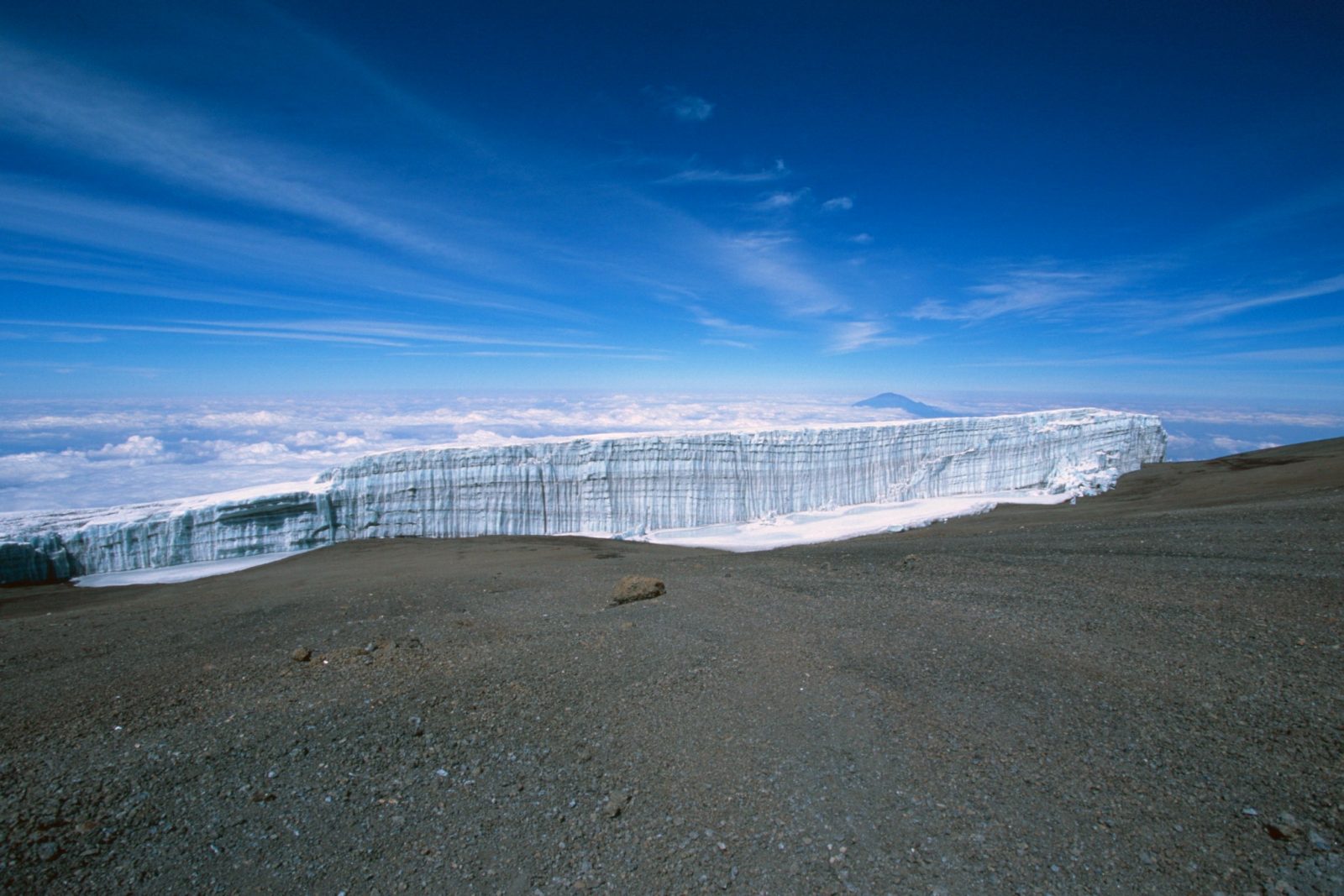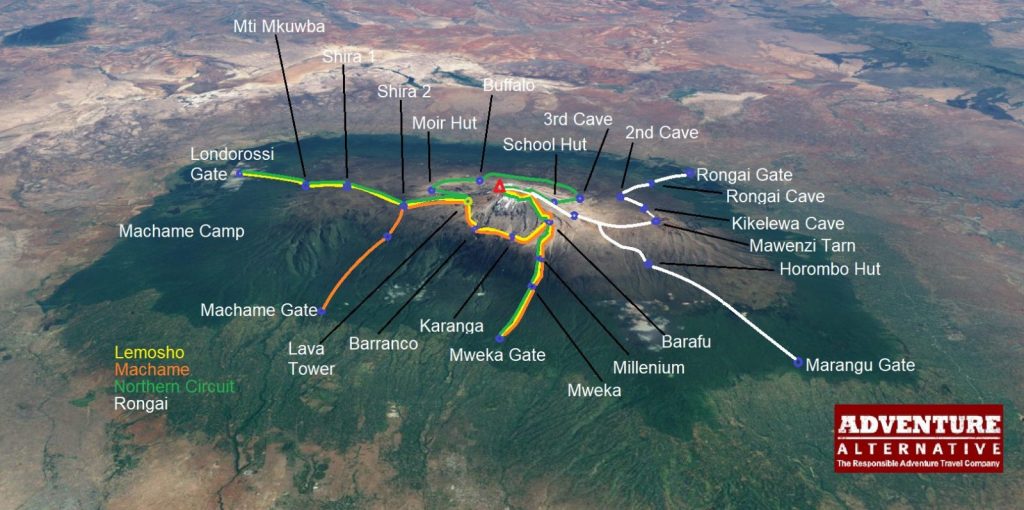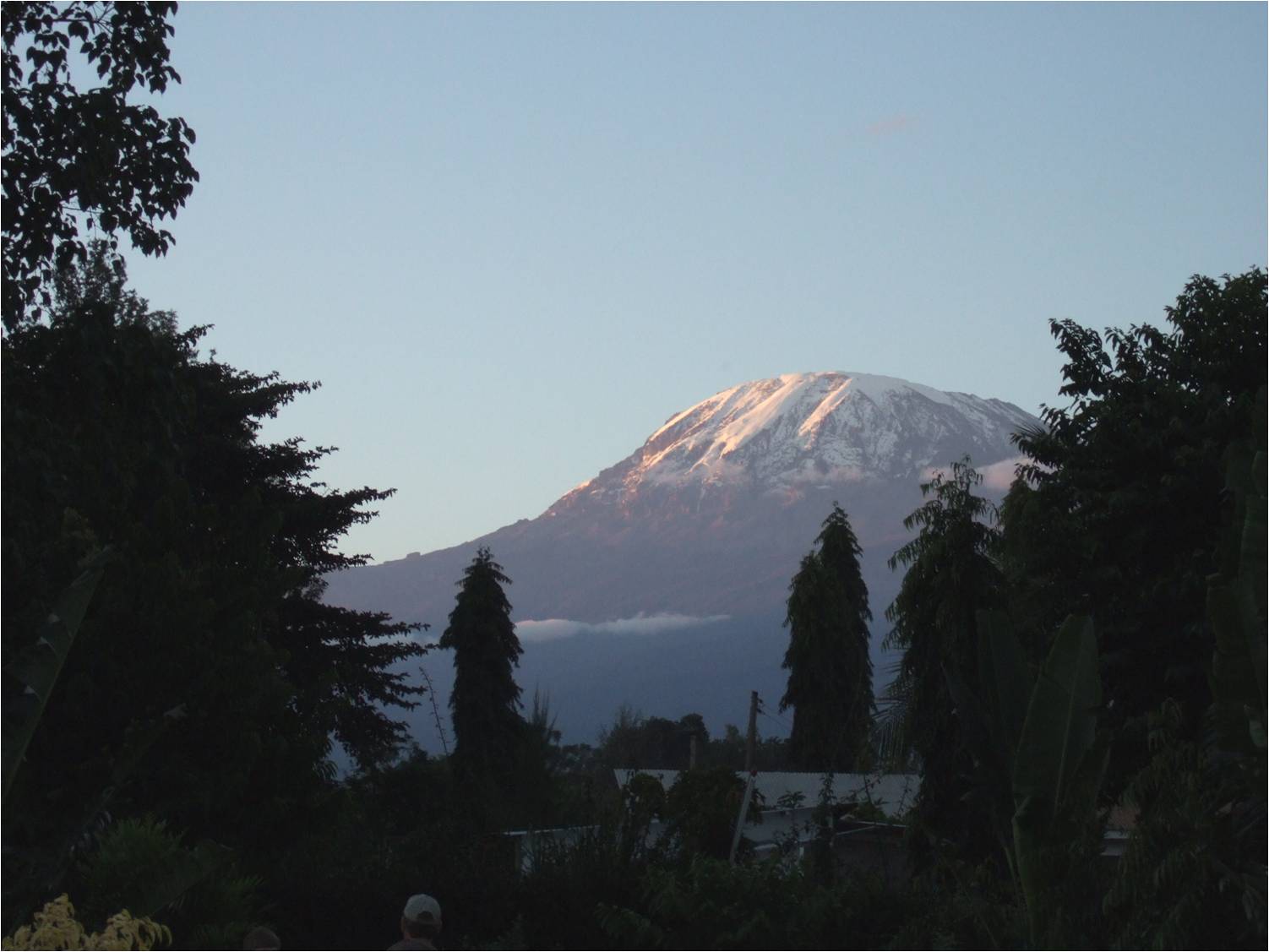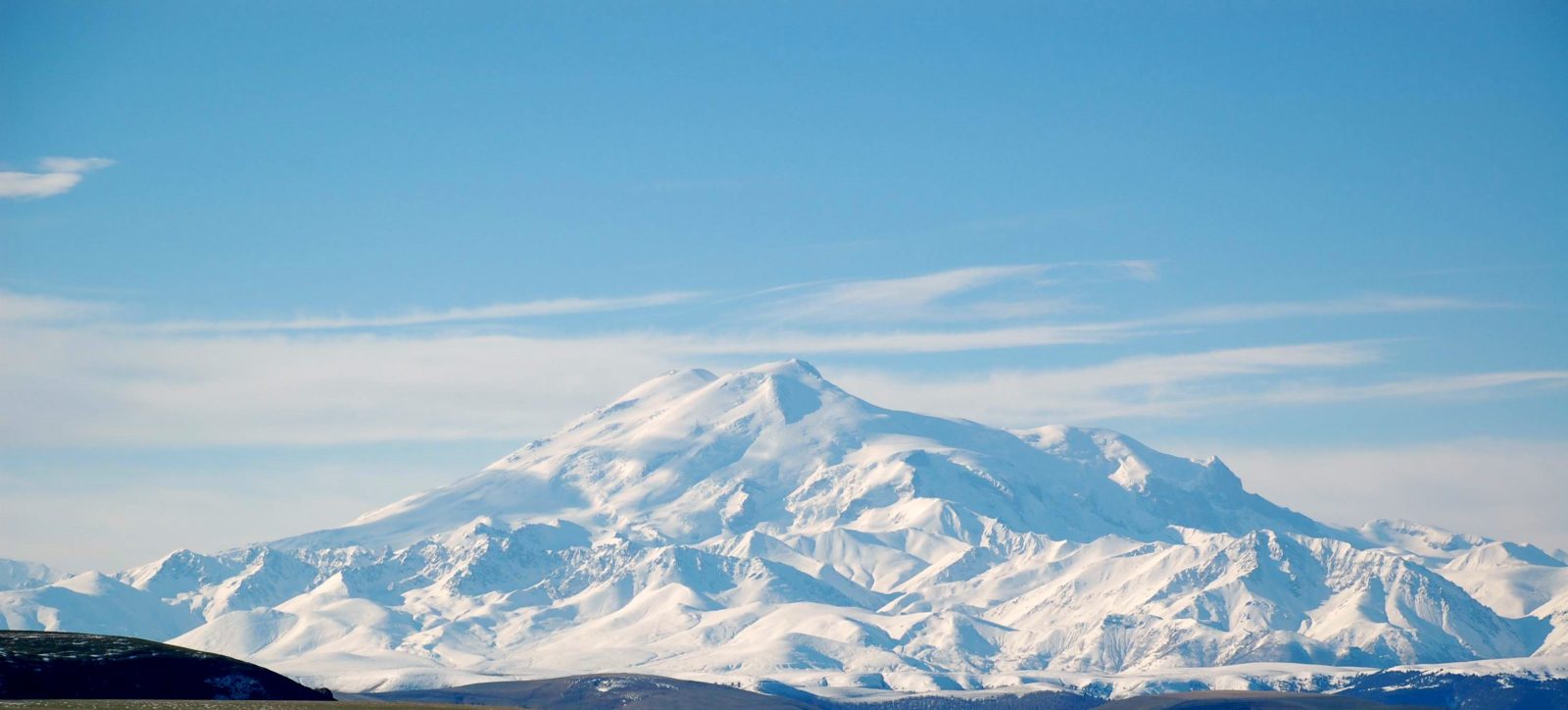
How Long Does it take to Climb Kilimanjaro?
Essentially it depends on which route you choose to climb Kilimanjaro, as they differ in terrain, length and accommodation type and can also be influenced by season.
Essentially it depends on which route you choose to climb Kilimanjaro, as they differ in terrain, length and accommodation type and can also be influenced by season. However, if it’s a speed attempt from the gate (that’s the entrance point of each route) to summit, well the record ascent of Kilimanjaro can be measured in hours! But of course, this is undertaken by professional athletes who are completely acclimatised, incredibly fit and a bit mad!

For the rest of us mere mortals then we’ll take the assumption that you’ll arrive into Tanzania and not be acclimatised to nearly 6000m (as the speed ascent athletes are). This means that you must take your ascent slowly and for most people – that’s good news!
HOW LONG DOES A CLIMB OF KILIMANJARO TAKE?
We always take a minimum of 7 days to climb, that is ascend, summit and descend. If you have the time and budget for more days, then great and the best number of days to spend on each route would be 7 days on the Kilimanjaro Machame route or 7 days on the Mount Kilimanjaro Lemosho route (the latter can also be climbed over 8 days), 7 days on the Mount Kilimanjaro Rongai route or 9 days on the Mount Kilimanjaro Northern Circuit route which gives you loads of time to acclimatise but isn’t always within budget.

THE MAIN ROUTES ON KILIMANJARO
A climb or trek to altitude should never be rushed, it should always have a slow pace, set by a good guide that knows what they are doing, and you should have a support team to encourage and assist you by providing good tents, great food and plenty of watchful eyes to ensure you’re doing as much as possible to look after yourself. Quite often people are surprised by the pace as it’s purposely slow, more of a dander. Sometimes people who walk a lot find walking slow quite tricky, but it’s essential to acclimatise.
Kilimanjaro is an expensive peak to climb and mostly due to the permits; for a seven day / six-night climb, which includes National Park fees, camping fees and a rescue fee the fees alone come to just shy of $1000 (correct as of 2020) for a non-resident. Due to this many people will drop a day or two from their itinerary and try to climb in 5 or 6 days to reduce cost, as when you add on good food, guides, porters, cooks, assistant cooks and all their costs, transport, hotels etc. it is an expensive peak.
Dropping a day or two will drop the price – however it will also drop your chances of summiting, as you simply don’t have the time to acclimatise as you would on a 7 day itinerary, plus you’re covering the same ground in less time, so you’re more tired.

After dreaming of climbing the peak, saving up, researching it, buying kit and flights and training, then it’s far better to go for a 7 day approach and reach the summit in great shape so that you can looking down on the sea of clouds and the plains far below and enjoy it! There is no point in failing to summit or reach it and feel terrible – looking only at your feet as you vomit with a massive throbbing headache – that is pointless. Far better to go there, take your time, reach the summit and enjoy every single moment of every day!

Related Articles

12 MONTHS, 12 MOUNTAINS
In celebration of World Mountain Day, we've created a calendar for the year to make it easy for you to plan your next mountain climb in the...

Why Kilimanjaro is a Great Mountain for Any Bucket List
Climbing one of the world’s tallest mountains is not a decision to be taken lightly – it will take endurance, a decent amount of fitness...

Kilimanjaro Compared to the Other Seven Summits
The 'Seven Summits' is a challenge first proposed and then completed by Richard Bass in 1985. The 7 Summits consists of climbing to the highest...

What’s The Highest Mountain in Europe?
Its summit is 18,510 feet (5642 meters) above sea level and it is located in Russia. However the mountain itself - including the glaciers...

How can I Climb Kilimanjaro for Charity?
We often get asked, ‘how do I climb Mount Kilimanjaro for Charity?’ and the answer is easy, call us to have an initial talk about...

Huts on Mount Elbrus
Years ago when I was guiding clients with my Russian friend Sasha Lebedev to climb Mount Elbrus during the ‘perestroika’ period after...

Faking Mount Everest?
An interesting story has come about towards the end of this years season on Mount Everest concerning the claim from an Indian climber that his...

What to Wear on Kilimanjaro
What to wear on a Mount Kilimanjaro Trek is probably the question we get asked most and there is, of course, a kit list for...

Kilimanjaro Diamox?
Regarding the use of Diamox on a Kilimanjaro climb, there is a tendency now for people to use it as a default drug in order to increase...
